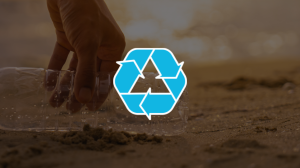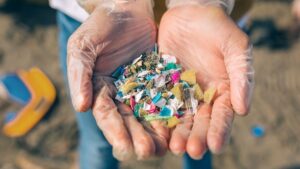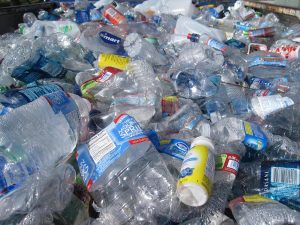Plastic superhighway: the awful truth of our hidden ocean waste
The ocean is like a superhighway for plastic debris, and every nation with a shoreline has a sliproad on to it. Regardless of where it comes from, once plastic enters the ocean, it’s everyone’s problem.
Temperature plays the biggest role in breaking down plastic, and in cold underwater trenches the ocean will actually preserve the plastic indefinitely. But when it reaches land, plastic shatters on rocks or shreds across exfoliating sand, breaking into fragments. The sun warms these small pieces, making them more brittle until they break into even smaller chips and chunks. This is when the toxins inside plastic have a higher chance of leaching out into the environment.
Out at sea, cross currents meet and spin and slowly draw plastic into gyres. Travelling on currents, plastic can work its way from the east coast of the US to the Arctic. Some ocean travellers report coming across great chains of plastic drifting on the surface; others see nothing at all. Ocean plastic can be so minute that it hangs suspended in the water column and is visible only under a microscope. How do we deal with a problem that can seem invisible or changes by the day or the hour? That shifting quality gives the impression that ocean plastic is not such a serious problem after all.
Some also dismiss the severity of the problem because they still think of plastic as chemically inert. We drink out of plastic cups, heat up food in plastic, and we store all kinds of chemicals in plastic. If plastic still retains its shape under heat and doesn’t dissolve when it touches other chemicals, it must not be harmful in the ocean, right? When animals eat small pieces of plastic, won’t they just harmlessly excrete the plastic and continue on their way?
In the age of climate change denial, many scientists and activists often confront a wilful disbelief about the threatened state of the ocean today. Scientists initially doubted the British sailor Charles Moore, who reported his discovery of the Great Pacific Garbage Patch in the mid-1990s. Chris Jordan, a Seattle photographer famous for his images of dissected albatrosses with stomachs full of bottle caps and plastic chunks, has been accused of staging his work, and now he posts start-to-finish videos of the dissections. Environmental damage is often too slow, too scattered, too distant to instill any sense of urgency in the sceptical or disengaged. Even when those impacts are condensed into hard statistics and diagrams or communicated through rigorously documented studies and video evidence, people can simply choose to believe their own particular truth.
We can continue to dump plastic for centuries before we’ll run out of space, that’s how good the ocean is at hiding our secrets. Compared to acidification and warming, plastic pollution is one of the more visible problems facing the ocean today because almost everyone, every day, throws away some piece of plastic. This makes it hard to eliminate, but also more visible and accessible. We have a greater chance of confronting this problem – because the plastic is in everyone’s hands.
Read the full and original story at TheGuardian.com



